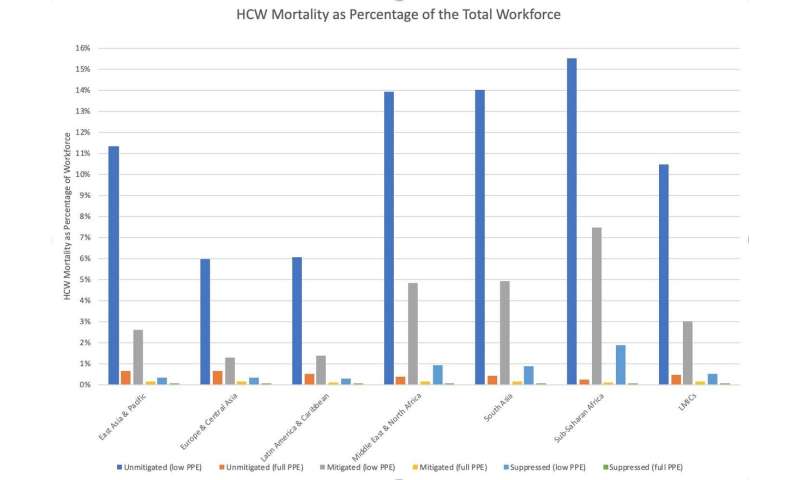
Providing adequate personal protective equipment (PPE) for all health care workers around the world requires an initial investment of billions of dollars, but the returns on that investment could be close to 8000% in productivity gains, according to a new study published this week in the open-access journal PLOS ONE by Nicholas Risko of the Johns Hopkins University School of Medicine and colleagues.
As COVID-19 spread around the world in early 2020, even resource-rich health systems experienced supply shortages of PPE to protect frontline health care workers. Over 80% of the world’s population lives in low- and middle-income countries (LMICs) where fragile health systems with few resources make health care workers particularly vulnerable to PPE shortages and COVID-19 infection.
In the new study, researchers calculated the cost of providing PPE to all LMIC health systems and used a model to compare the costs and effects of two PPE use scenarios for all LMICs. Data from the World Health Organization COVID-19 Essential Supplies Forecasting Tool was used, as well as estimates of national mortality and hospitalizations that had been previously calculated and published.
The model predicted that an initial global investment of $9.6 billion U.S. could save the lives of roughly 2.2 million health care workers by providing adequate PPE. This comes out to $59 dollars per case averted and $4,309 per life saved. The benefit to society yields $755.3 billion dollars, or about an 8,000% return. The largest net economic gains would be seen in the East Asia & Pacific region, South Asia, and Sub-Saharan Africa. In addition, the study shows that scaling up the provision of PPE is a required component of national strategy if the health care workforce is to be protected.
Source: Read Full Article
